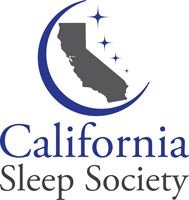By: Emmanuel During, MD
We will all remember the year 2020. A tragic year of confinement, emotional and financial strain across the society and across the globe. It seems that a lot can be said about this, but not much can be done, except for physically distancing, as we start to realize how important in our human condition is caring for each other, 6 feet apart. How about caring for ourselves?
Sleep providers are the first witnesses of another global pandemic, that of reduced sleep quality and increased sleep complaints. No other time or circumstances in history have led humankind to this kind of crazy experiment: how does the human species function with near complete sedentariness? Sedentariness is one of the most robust risk factors for cardiovascular, neurological and psychiatric morbidity. The literature is abundant on this topic. In our modern society, most of us walk 5,000 to 10,000 steps daily, the bulk of which is merely related to what we are forced to do, i.e., walking from a room to another at the workplace, running errands and being engaged in some social activities. In normal circumstances, these 5,000 and 10,000 steps are below the threshold for optimal health. Worse, in the last few months, the majority of us have been doing much less than that. This has important consequences on sleep. The so called “sleep drive”––what makes us sleep better and deeper, and makes sleep feel more restorative––is a direct function of how much physical activity we do during the day. The more we exercise and burn energy, the more ATP we burn, and the more adenosine we generate. Adenosine is the biological measure of our sleep drive. When one works from home, when one avoids running daily errands to minimize the risk of infection, when one has reduced social interactions to the bare minimum or to Facetime or Zoom calls, how can he maintain the minimal amount of physical activity to maintain a strong sleep drive? This is the question we have to think about, for ourselves, and for our patients.
There is no supplement, therapy, or consumer device that can replace physical exercise. This statement is not meant to be bleak, it is meant to urge us to realize that the solution lies within us. For decades, scientists and epidemiologists have argued that our society’s lifestyle was poor, it has now reached its lowest point. The silver lining of this is that WE do not need anyone or anything to make a change, that we just need to realize who we are and what we need. With increased physical exercise and reduced sedentariness, all markers of health improve, not just physical health, cardiac and neurological, but mental health, and ultimately well-being. The Yin and the Yang of sleep and wake is telling us that for healthy sleep, we need healthy wake, and that healthy wake needs more physical activity.
Now, start thinking, what are you doing in this domain, and what could you do to do better? Send us your tips and experiences and start sharing with your patients!

